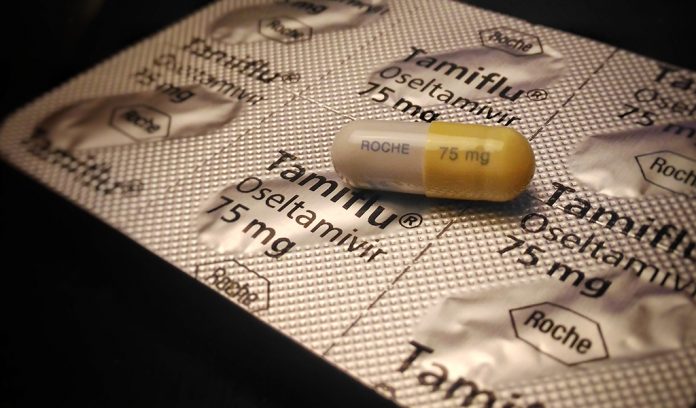
(DoctorFarrah)- You must have heard of Tamiflu by now? It’s that drug (scientific name: Oseltamivir) that is routinely prescribed for the flu to children – to disastrous effects! Since 2009, the U.S. Food and Drug Administration (FDA) has recorded 550 cases of hallucinations from Tamiflu with parents reporting that their children go into seizures, twitching fits, and wild delusions when taken.
Even with studies conducted as far back as in the late 1990s, we see small cohorts (partnership studies to find the causes of disease and trace the links between risk factors and outcomes), inconclusive findings, label warnings, and even an attempt by the FDA to stop the sale of the drug in the market. Further analyses in 2007 found that Tamiflu posed a severe risk to children in the wake of 1,377 reports of adverse reactions in Japan and 80 deaths (71 directly related to the use of Tamiflu).
History of Tamiflu
Up to now, a lot of medical doctors are still under the impression that Tamiflu can prevent influenza viruses from multiplying and affecting other cells. A 1999 Journal of the American Medical Association (JAMA) article asserts that Tamiflu “. . . provided significant antiviral, biochemical, and clinical effects in experimental human influenza virus infection.” Hoffmann-La Roche, the manufacturer of Tamiflu, presented the study and two additional clinical trials to an FDA committee of medical advisors in 1999. The data presented was insufficient to convince the FDA committee that the drug was safe or effective.
Clinical studies for Tamiflu were conducted on young adults with the median age of 21, although it was approved for use by children as young as two weeks old. In the research, 105 participants were given Tamiflu at various doses. On results, only 33 subjects said it had the capability of reducing nasal influenza infection. Although the study did measure the amount of virus particles in the participants’ mucus and nasal passageways, it did not study how the drug impacted on the rest of the patient’s body, including the replication of influenza viruses throughout and the formation of drug-resistant pathogens in the microbiome of patients.
Despite the substandard data produced, the FDA approved Tamiflu and gave it the go-signal to market but requiring the following statement in its packaging: “Tamiflu has not been proven to have a positive impact on the potential consequences (such as hospitalization, mortality, or economic impact) seasonal, avian, or pandemic influenza.”
So Hoffman-LaRoche occasionally would come up with new studies to affirm the efficacy and effectiveness of Tamiflu. The New England Journal of Medicine (NEJM) published a study entitled “Use of the Selective Oral Neuraminidase Inhibitor Oseltamivir to Prevent Influenza” which was penned by Dr. Penelope Ward, former Hoffman-La Roche’s Head of Clinical Development. In the study’s footnotes, you could see her study was funded by grants from Hoffman-La Roche.
On the other hand, a 2009 independent re-analysis of Tamiflu and published in the BMJ found no significant evidence that the drug actually lowers influenza complications and symptoms. It even revealed that Tamiflu causes nausea.
Tamiflu causes Delusions, Suicidal Tendencies in Children
Not only is Tamiflu ineffective, the drug is dangerous especially to young children. After six years that the drug was continuously sold in the Japanese market, it has generated 1,377 cases of adverse reactions, such as convulsions, delirium, and encephalitis. Two 14-year-old users of the drug took it really bad and committed suicide. Seventy-one deaths were attributed directly to Tamiflu. A 2011 Japanese study found a 600% increase in deterioration and death within 12 hours after taking Tamiflu by users. No wonder that Japanese authorities warn their nationals against using Tamiflu.
In the U.S., the same kind of reactions to the drug are experienced. Children experience seizures and act violently after taking Tamiflu. A Texan family reported their two-year-old son experienced seizures and twitches after taking the drug; the seizures stopped when he stopped taking it in.
A North Carolina six-year-old died from a side effect of Tamiflu (labored breathing) three days after taking the drug. An Indiana family recounted their daughter hearing voices and attempted to jump out of her window after taking Tamiflu.
When will Big Pharma stop marketing this kind of drugs? Will you stake your child’s mental and physical health for drugs like Tamiflu?
If you need further information on the commercialization of drugs and how it affects us, do visit our website at www.drfarrahcancercenter.com.
Copyright 2023, DoctorFarrah.com











